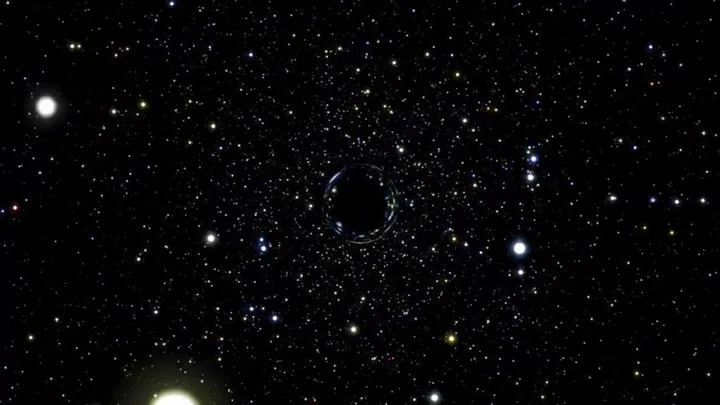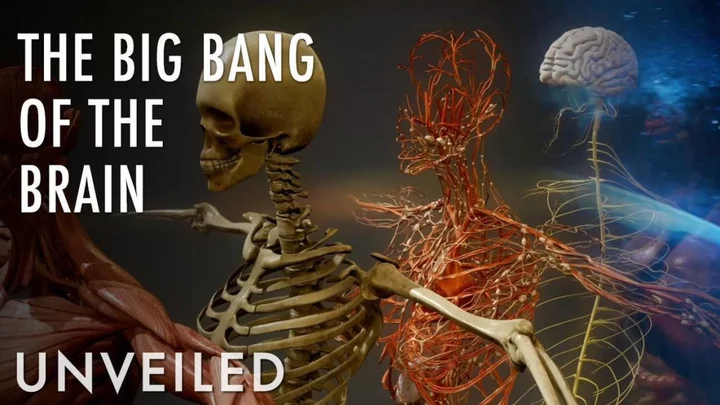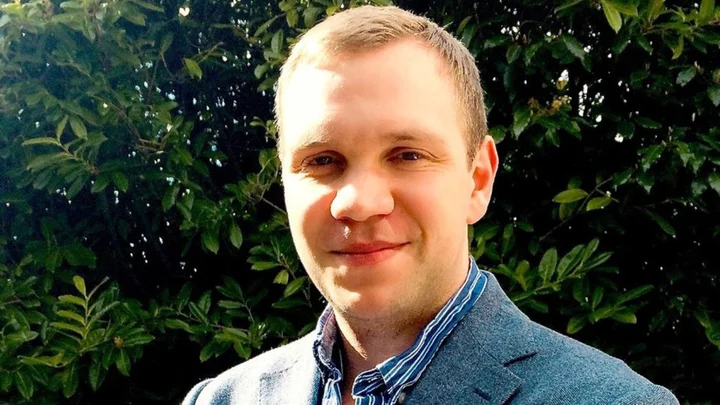
Anti-drone technology operational at Dublin Airport
The airport was closed six times due to illegal drone activity in the first eight weeks of 2023.
2023-09-08 00:20

Generation AI: education reluctantly embraces the bots
By Barbara Lewis and Supantha Mukherjee LONDON/STOCKHOLM At leading Swedish university Lund, teachers decide which students can use
2023-09-07 16:50

AI can help generate synthetic viruses and spark pandemics, warns former Google executive
Synthetic viruses could be generated through the misuse of artificial intelligence and potentially spark pandemics, a former Google executive and AI expert has warned. Google DeepMind co-founder Mustafa Suleyman expressed concern that the use of AI to engineer pathogens to cause more harm may lead to a scenario like a pandemic. “The darkest scenario is that people will experiment with pathogens, engineered synthetic pathogens that might end up accidentally or intentionally being more transmissible or more lethal,” he said in a recent episode of a podcast. Similar to how there are restrictions in place to prevent people from easily accessing pathogenic microbes like anthrax, Mr Suleyman has called for the means to restrict access to advanced AI technology and software that runs such models. “That’s where we need containment. We have to limit access to the tools and the know-how to carry out that kind of experimentation,” he said in The Diary of a CEO podcast. “We can’t let just anyone have access to them. We need to limit who can use the AI software, the cloud systems, and even some of the biological material,” the Google DeepMind co-founder said. “And of course on the biology side it means restricting access to some of the substances,” he said, adding that AI development needs to be approached with a “precautionary principle”. Mr Suleyman’s statements echo concerns raised in a recent study that even undergraduates with no relevant background in biology can detail suggestions for bio-weapons from AI systems. Researchers, including those from the Massachusetts Institute of Technology, found chatbots can suggest “four potential pandemic pathogens” within an hour and explain how they can be generated from synthetic DNA. The research found chatbots also “supplied the names of DNA synthesis companies unlikely to screen orders, identified detailed protocols and how to troubleshoot them, and recommended that anyone lacking the skills to perform reverse genetics engage a core facility or contract research organization”. Such large language models (LLMs), like ChatGPT, “will make pandemic-class agents widely accessible as soon as they are credibly identified, even to people with little or no laboratory training,” the study said. The study, whose authors included MIT bio risk expert Kevin Esvelt, called for “non-proliferation measures”. Such measures could include “pre-release evaluations of LLMs by third parties, curating training datasets to remove harmful concepts, and verifiably screening all DNA generated by synthesis providers or used by contract research organizations and robotic ‘cloud laboratories’ to engineer organisms or viruses”. Read More China’s ‘government-approved’ AI chatbot says Taiwan invasion is likely Government urged to address AI ‘risks’ to avoid ‘spooking’ public Scientists give verdict on Harvard professor’s claim of finding materials in sea from outside Solar System Google boss says he wants to make people ‘shrug’ Why is Elon Musk obsessed with the letter X? Elon Musk ‘borrowed $1bn from SpaceX’ at same time as Twitter acquisition
2023-09-07 15:46

Scientists confused after black holes 'burp up' previously destroyed stars
It feels like every time black holes are discussed and studied by the scientific community, there are new findings that blow our tiny minds. It’s been revealed that black holes actually regurgitate or “burp up” the stars that they eat years after the event. Experts made the discovery by studying tidal disruption events (TDEs). These events take place when stars are close enough to supermassive black holes, to be destroyed by the process of spaghettification. Studying these moments over a number of years after the black holes seemingly swallowing stars with no trace, the experts found that up to 50 per cent of them "burp up" the remains. Yvette Cendes is a research associate at the Havard and Smithsonian Center for Astrophysics and head author on the study. Speaking to Live Science, she said: "If you look years later, a very, very large fraction of these black holes that don’t have radio emission at these early times will actually suddenly 'turn on' in radio waves. "I call it a 'burp' because we’re having some sort of delay where this material is not coming out of the accretion disk until much later than people were anticipating." The material was re-emitted between two and six years from 10 out of 24 black holes which were studied by Cendes and the team. It has the potential to change the way the scientific community thinks about black holes. "There was a second peak, the two black holes re-brightened, and that's completely new and unexpected," Cendes said. "People were thinking that you'd have one outflow, and then it's kind of done. So this observation means these black holes can 'turn on' and then 'turn on' again." Meanwhile, a low intergalactic grumbling is emanating from deep space, according to scientists – and again, it’s black holes that are providing us with new discoveries. Astronomers say they detected the first-of-their-kind low frequency ripples, described as a “cosmic bass note” of gravitational waves, which is thought to be caused by supermassive black holes merging across the universe. Sign up for our free Indy100 weekly newsletter Have your say in our news democracy. Click the upvote icon at the top of the page to help raise this article through the indy100 rankings
2023-09-07 00:21

Frozen humans could be brought back to life in next 50 years claims expert
Experts may have found a way to resurrect frozen humans in 50 to 70 years. It comes after a cryonics company was able to revive an extinct worm from 46,000 years ago, leading them to believe the method could be applied to humans. "Cryonics is a scientifically based, legal technology for preserving humans and animals in a state of deep cooling in the hope that in the future they will be resuscitated and, if necessary, cured and rejuvenated," Russian cryogenics company KrioRus explained. "For legal reasons, human cryopreservation can be carried out only after legal death." KrioRus shared how the dead patient is "immersed into a low-temperature medium where almost all chemical reactions are stopped." The first ever cryopatient, American professor James Bedford, has been preserved for almost 50 years "with no sign of change or deterioration." "In the prognosis of modern science, a cryopatient can indeed be someday revived and return to life," they said. Many more people have opted to freeze their deceased pets, with costs dependent on pet size, species and distance to the facility among other factors. A dog is said to cost around $25,000. The company claims to have cryopreserved 92 people but disclaimed that for humans to be resurrected, there must be significant progress in the medical field. "Cryobiological laboratories are few, there are no large ones at all," CEO Valeriya Udalova told MailOnline. "Even the famous laboratory 'XXI Century Medicine' is a small organization." She continued: "But even in such a deplorable situation, remarkable experiments have already been made, for example, on reversible cryopreservation of a rat kidney using gas persufflation with nanoparticles and induction heating." Sign up for our free Indy100 weekly newsletter Have your say in our news democracy. Click the upvote icon at the top of the page to help raise this article through the indy100 rankings.
2023-09-06 21:15

China Considers Law Banning Clothes That ‘Hurt Feelings’ of Others
China’s public is expressing concern about a potential legal change that would allow for fines and even jail
2023-09-06 14:55

Newport Wafer Fab: Restrictions blamed for proposed job losses
Nexperia announce 100 job losses after it was told to sell its stake over national security worries.
2023-09-06 03:22

Curly hair may have been critical to human evolution
Curly hair may have been absolutely critical to humans evolving millions of years ago, scientists have discovered. In fact, having curly hair could have been the key reason as to why humans developed, grew taller and came to have larger brains. It’s all to do with regulating body temperature, according to a new study by researchers at Penn State University. Given that hair can help to protect the head from the sun’s rays, it’s thought that thicker, curlier hair types could have been key to human life progressing in Equatorial Africa. Scientists recreated the kinds of conditions that early humans would have experienced, using wigs featuring different hair types on models. They found that curls were most effective in keeping the models cool in an environment measuring 86 degrees Fahrenheit (30 degrees Celsius) and 60 per cent humidity. Tina Lasisi is the study's lead author. She spoke to Newsweek about the findings and said: "We hypothesized that tightly curled scalp hair would provide some benefits, but the extent of these benefits was uncertain. "Previous studies on mammalian coats have shown that hair can limit the amount of sunlight reaching the skin, but we were particularly surprised by the significant reduction in solar heat radiation impact provided by tightly coiled hair.” The reduction in heat caused by tight curls could have led to the development of larger brains. "Once humans developed large brains, they could employ other behavioral and social strategies to cope with heat, potentially diminishing the relative advantage of curly hair," she said. "This could have led to a diverse distribution of hair textures worldwide. Furthermore, since straight hair better retains heat, populations in colder environments may have experienced selective pressure for straight hair." She added: "Future research should aim to answer these questions by incorporating our data into mathematical models of human physiology or conducting experiments with human subjects who have different hair textures to examine the impact on their thermal regulation.” Sign up for our free Indy100 weekly newsletter Have your say in our news democracy. Click the upvote icon at the top of the page to help raise this article through the indy100 rankings
2023-09-06 00:50

Mysterious 'golden egg' discovered at the bottom of the ocean leaves scientists baffled
A mysterious golden object has been found at the bottom of the ocean by scientists exploring the Pacific Ocean and it has left them baffled. The discovery was made on 30 August when a team of experts from the National Oceanic and Atmospheric Administration (NOAA) were taking a closer look at an underwater volcano 250 miles off the coast of Alaska. Experts, and members of the public viewing the live stream, caught a glimpse of the unusual gold orb two miles beneath the surface lodged into the side of the volcano and were left puzzled over what it could be. It was found thanks to the NOAA’s Seascape Alaska 5 expedition that is currently mapping the seafloor of the Gulf of Alaska. Those who made the discovery at the foot of the volcano also noted there was a mysterious hole in the side of the orb, with one researcher suggesting on the live stream that “Something tried to get in...or to get out”. Scientists bantered back and forth about what the egg-like object could be and ultimately decided to take a sample that could be analysed. The texture of the orb was not as they had expected and was more of a silky, delicate consistency. An arm from the robotic vehicle was used to suction the orb in order for scientists to determine its origins with laboratory testing. The NOAA Seascape Alaska 5 expedition is due to end in mid-September and aims to fill the gaps that experts have about the sea beds off the USA’s west coast. It began on 24 August in Kodiak, Alaska and will come to an end in Seward, Alaska on 16 September. Sign up to our free Indy100 weekly newsletter Have your say in our news democracy. Click the upvote icon at the top of the page to help raise this article through the indy100 rankings.
2023-09-05 22:57

Virtual reality ‘being used to groom and abuse children’ – NSPCC
Offenders are using virtual reality (VR) to groom and sexually abuse children, as well as share illegal images of abuse, according to new research from the NSPCC. A report commissioned by the children’s charity on VR and immersive technologies said the online spaces at the heart of the technology are being used by offenders to not only interact with children, but also to simulate acts of abuse. It warned that offenders are being desensitised to their own behaviour because of the anonymity such spaces provide through their use of customisable, digital avatars to represent each person present, which the report said offenders are using to hide behind. Virtual reality platforms are based around a person wearing a headset, which immerses them in a virtual world where they can see and interact with other users as well as consume content, and is seen by some as the next iteration of the internet. However, the study warned that these VR worlds invite the creation of tighter-knit offender communities, which could be used to share child sexual abuse material and lead to an escalation in harmful behaviours. These shocking findings should be a wake-up call to us all about the harm young people are facing when engaging with immersive technology Richard Collard, NSPCC In response, the NSPCC has called on tech firms to do more to ensure virtual reality platforms are safe by design by introducing better child safety features and reporting systems. It has also called on the Government to provide more guidance, funding and learning opportunities to law enforcement on how to deal with virtual reality platforms. And with the Online Safety Bill due to continue its passage through Parliament this week, the charity said the Government should review the Bill’s safety regime on a regular basis to ensure that it keeps up with emerging technologies and harms to make sure they are adequately covered under the law. Richard Collard, head of child safety policy at the NSPCC, said: “These shocking findings should be a wake-up call to us all about the harm young people are facing when engaging with immersive technology. “Technology will continue to progress, and so must we to ensure that we can understand the existing and emerging risks that young people face in these virtual spaces. “As the Online Safety Bill completes its passage through Parliament, it is vital that new and emerging technology forms a crucial part of the online safety regime. “This will only be made possible through clear collaboration between educators, parents, policymakers, and the technology industry.” Earlier this year, crime statistics data obtained from police forces in England and Wales by the NSPCC showed that virtual reality was recorded eight times in crime reports, the first time the technology has been specifically mentioned, the charity said. Read More Charity boss speaks out over ‘traumatic’ encounter with royal aide Ukraine war’s heaviest fight rages in east - follow live Russian cyber-attacks ‘relentless’ as threat of WW3 grows, expert warns Warner Music sign first digital character Noonoouri and release debut single Met should thoroughly investigate cyber security practices, say experts
2023-09-05 07:20

Matthew Hedges: Foreign Office apology to UAE torture academic
Matthew Hedges' ordeal sparks a review into internal guidance on torture and mistreatment cases.
2023-09-05 02:21

The Moon is slowly drifting away from Earth and its beginning to impact us
The Moon is a constant in the night sky, but all is not actually as it seems. It turns out that scientists have discovered the Moon is drifting away from Earth, and it’s changing everything we thought we knew about our planet’s relationship with its only natural satellite. It’s also having a very real impact on the length of days on our planet – albeit at an incredibly slow rate. By moving away from Earth over the course of millions of years, the Moon is simultaneously making the length of the average day longer. A study by a team at the University of Wisconsin-Madison focused on rock from a formation aged at 90 million years. By doing so, they were able to analyse the Earth’s interactions with the Moon 1.4 billion years ago. It turns out that the Moon is moving away from Earth at us at 3.82 centimetres a year. That means that, eventually, it’ll result in Earth days lasting 25 hours in 200 million years time. Stephen Meyers, who is a professor of geoscience at the University of Wisconsin-Madison, said: “As the moon moves away, the Earth is like a spinning figure skater who slows down as they stretch their arms out.” He added: “One of our ambitions was to use astrochronology to tell time in the most distant past, to develop very ancient geological time scales. “We want to be able to study rocks that are billions of years old in a way that is comparable to how we study modern geologic processes.” It’s not the only story that changes our understanding of the Moon recently. Scientists have also just uncovered billions of years’ worth of secrets buried beneath the surface of the moon – all thanks to China’s space programme, which has uncovered hidden structures which can help us start to piece together the Moon’s past. Sign up for our free Indy100 weekly newsletter Have your say in our news democracy. Click the upvote icon at the top of the page to help raise this article through the indy100 rankings
2023-09-04 20:21
